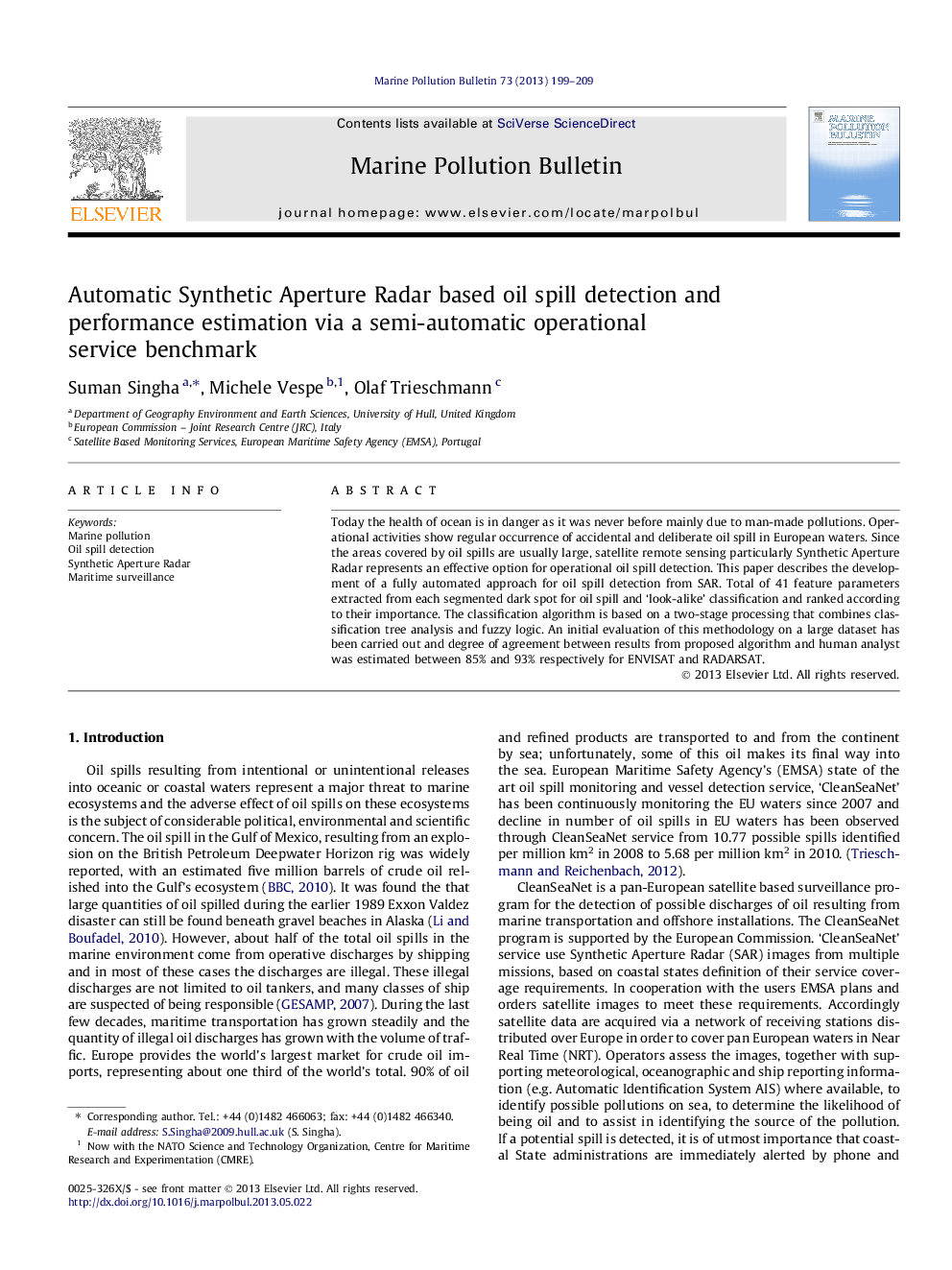| Article ID | Journal | Published Year | Pages | File Type |
|---|---|---|---|---|
| 6359436 | Marine Pollution Bulletin | 2013 | 11 Pages |
â¢Development of a completely automated methodology for oil spill detection.â¢Total of 41 feature parameters extracted and ranked according to their importance.â¢Classification algorithm based on classification tree analysis and fuzzy logic.â¢Degree of agreement between results from algorithm and human analyst was evaluated.
Today the health of ocean is in danger as it was never before mainly due to man-made pollutions. Operational activities show regular occurrence of accidental and deliberate oil spill in European waters. Since the areas covered by oil spills are usually large, satellite remote sensing particularly Synthetic Aperture Radar represents an effective option for operational oil spill detection. This paper describes the development of a fully automated approach for oil spill detection from SAR. Total of 41 feature parameters extracted from each segmented dark spot for oil spill and 'look-alike' classification and ranked according to their importance. The classification algorithm is based on a two-stage processing that combines classification tree analysis and fuzzy logic. An initial evaluation of this methodology on a large dataset has been carried out and degree of agreement between results from proposed algorithm and human analyst was estimated between 85% and 93% respectively for ENVISAT and RADARSAT.
